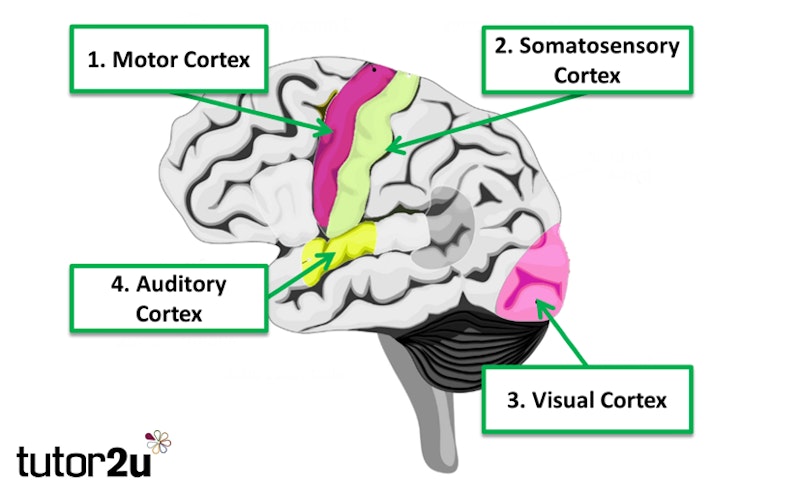Study Notes
Biopsychology: Localisation of the Brain Function
- Level:
- A-Level
- Board:
- AQA, Edexcel, OCR, Eduqas, WJEC
Last updated 10 Apr 2017
Localisation of function is the idea that certain functions (e.g. language, memory, etc.) have certain locations or areas within the brain. This idea has been supported by recent neuroimaging studies, but was also examined much earlier, typically using case studies.
One such case study is that of Phineas Gage, who in 1848 while working on a rail line, experienced a drastic accident in which a piece of iron went through his skull. Although Gage survived this ordeal, he did experience a change in personality, such as loss of inhibition and anger. This change provided evidence to support the theory of localisation of brain function, as it was believed that the area the iron stake damaged was responsible for personality.
There are four key areas that you need to be aware of: motor, somatosensory, visual and auditory areas.

Motor Area
The motor area is located in the frontal lobe and is responsible for voluntary movements by sending signals to the muscles in the body. Hitzig and Fritsch (1870) first discovered that different muscles are coordinated by different areas of the motor cortex by electrically stimulating the motor area of dogs. This resulted in muscular contractions in different areas of the body depending on where the probe was inserted. The regions of the motor area are arranged in a logical order, for example, the region that controls finger movement is located next to the region that controls the hand and arm and so on.
Somatosensory Area
The somatosensory area is located in the parietal lobe and receives incoming sensory information from the skin to produce sensations related to pressure, pain, temperature, etc. Different parts of the somatosensory area receive messages from different locations of the body. Robertson (1995) found that this area of the brain is highly adaptable, with Braille readers having larger areas in the somatosensory area for their fingertips compared to normal sighted participants.
Visual Area
At the back of the brain, in the occipital lobe is the visual area, which receives and processes visual information. Information from the right-hand side visual field is processed in the left hemisphere, and information from the left-hand side visual field is processed in the right hemisphere. The visual area contains different parts that process different types of information including colour, shape or movement.
Auditory Area
The auditory area is located in the temporal lobe and is responsible for analysing and processing acoustic information. Information from the left ear goes primarily to the right hemisphere and information from the right ear goes primarily to the left hemisphere. The auditory area contains different parts, and the primary auditory area is involved in processing simple features of sound, including volume, tempo and pitch.
You might also like
The Biological Approach
Study Notes
Stress: What Is It Good For? Absolutely Nothing!
17th January 2017
Approaches in Psychology: AS Webinar Video 2016
Topic Videos
Memory - Key Term "Conundrum" Activity
Quizzes & Activities

Psychology In The News: Footballers See The Light
4th March 2024